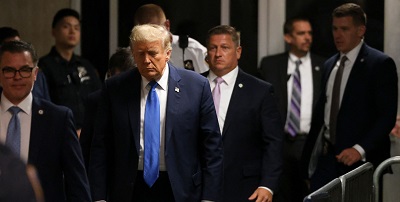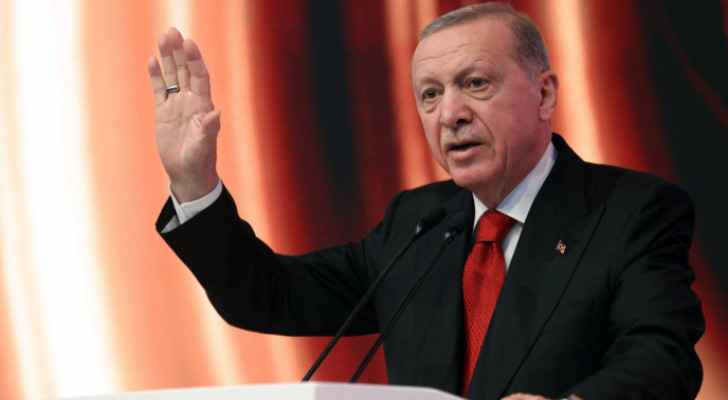New Polls Don’t Bode Well for Trump - By Jonathan Bernstein, Asharq Al-Awsat
Wednesday was Pollsmas, or whatever you’d call a holiday that celebrates a whole bunch of post-convention public-opinion surveys. And if you add them all up, there’s a lot of good news for former Vice President Joe Biden, Senator Kamala Harris and the Democrats.
I’ll start with the good news for President Donald Trump: His approval ratings have definitely improved. He’s at his best point since May. That’s … well, it’s quite a bit better than where he was in July.
The bad news for him is that those approval ratings aren’t very good; he’s still quite a bit worse off than any of the elected presidents who won a second term, although at least he’s now solidly better than where George H.W. Bush and Jimmy Carter were at this point. But as I said last month, after the conventions it’s time to start paying more attention to head-to-head horse-race polling, and the new surveys released Wednesday make clear that the conventions failed to change anything.
Biden is still in the lead. The FiveThirtyEight polling average estimate showed his lead at just about 8% right before he selected Harris as his running mate; now, after that news and both conventions, the lead is at 7.4%. But that reflects the polls taken during and immediately after the Republican convention, which means they may well reflect a bounce for Trump that will fade over the next two weeks. So at best, the president has gained a little, and more likely the conventions won’t have any cumulative lasting effect. It’s true that Trump appears to have an Electoral College advantage similar to the one he had in 2016, but even if he could win the Electoral College (and therefore the election) while losing the popular vote by 3 percentage points, that still leaves him in pretty bad shape.
The problem is that voters are engaged, and polling has been remarkably stable; ever since Biden essentially clinched the Democratic nomination in early March, his lead in national polling has rarely been more than a couple of points away from 8%. And the closer we get to Election Day, the less likely it is that events will change that. The conventions could have — we might’ve found out that there was a good-sized group of people who had moved away from Trump but, once they focused on the choice between Trump and Biden, would come back to the president. That hasn’t panned out, and it’s not clear what would change the contest at this point in Trump’s favor.
None of this is to say that the president can’t win. The model is 2016: He was behind, but a favorable news cycle dominated the last few days of the campaign and moved the national polls a bit. Then it turned out that some state polls were off by just enough, and in the right direction, that he was able to put together an unusual Electoral College win. This time, he’s farther behind in the polls, there’s no guarantee that any October surprise would be effective, and it’s likely that the state polls will be more accurate. Nate Silver’s model believes Biden will probably win; the Economist’s model thinks he is very likely to.
Even so, it’s certainly possible the president could turn things around. There’s still enough uncertainty in this unusual year that modesty in predictions makes even more sense than normal. Still, no incumbent president wants to be clearly behind in the polls after the conventions. I’ll put it this way: Yes, Trump can win, but it’s increasingly unlikely that he can win without something happening to change the situation, and it’s increasingly unlikely that something will happen to change the situation.
Latest News
 Prosecution lays out ‘criminal conspiracy’ in historic Trump trial
Prosecution lays out ‘criminal conspiracy’ in historic Trump trial King from Madaba: Jordan has always proven its ability to move forward with persistence of Jordanians
King from Madaba: Jordan has always proven its ability to move forward with persistence of Jordanians Safadi discusses war on Gaza with French, German delegations
Safadi discusses war on Gaza with French, German delegations Erdogan arrives in Baghdad for first official visit since 2011
Erdogan arrives in Baghdad for first official visit since 2011 “Israeli” army says it approved plans for “continuation of war in Gaza”
“Israeli” army says it approved plans for “continuation of war in Gaza”
Most Read Articles
- Safadi discusses support to Syrian refugee with DRC
- King, Kuwait emir reaffirm pride in deep-rooted relations
- Israeli Occupation aggression on Gaza enters 200th day
- Kuwait channels $24 billion in development assistance to Jordan in 24 years
- UNRWA’s role in Gaza indispensable — Foreign Ministry
- Jordan condemns Israeli 'war crimes' in Gaza, calls for accountability
- King orders holding parliamentary elections in accordance with law, checks on electoral commission’s preparations
- Jordan outperforms MENA average in women, business, law indicators — report
- General Motors lifts 2024 profit forecast after strong Q1
- The ideological coup: How disciples of Kahane became the new face of Israel - By Ramzy Baroud, The Jordan Times